2000多年前,张骞出使西域,连接起了中国与外部世界沟通的“丝绸之路”。这条路增进了中国与其他国家的经济文化交流,还将各类外国物产引进到中国,丰富了平常百姓的餐桌。
今天,我们就一起来看看,咱们餐桌上的哪些食材是通过这条“丝路”来到中国的。
1. Grape 葡萄

A farmer in Wangcun village, Shanxi province, enjoys the delicious grapes and the delights of the harvest with her son. [Photo by Liu Liangliang/for chinadaily.com.cn]
Originating in the Black Sea and the Mediterranean, the grape entered China from Dayuan, during the reign of Emperor Wu of Han Dynasty (206 BC - AD 220). Dayuan was an ancient country in Ferghana valley in central Asia, which was famous for grapes, alfalfa, and ferghana horses.
葡萄最早产于黑海和地中海,在汉武帝时期由大宛传入中国。大宛是中亚地区费尔干纳谷地的一座古城,以盛产葡萄、苜蓿以及费尔干纳宝马闻名。
2. Pomegranate 石榴
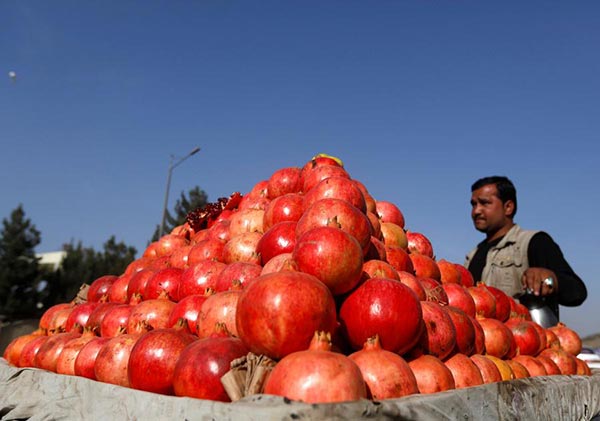
An Afghan man sells pomegranates along a street in Kabul, Afghanistan October 19, 2016. [Photo/Agencies]
The pomegranate(读音['pɑm.ɡrænət]) originated in the region of modern-day Iran, and has been cultivated since ancient times throughout the Mediterranean region and northern India. The fruit was introduced to China during the Tang Dynasty (AD 618-907), and was considered an emblem of fertility and numerous progeny.
石榴产自如今伊朗所在的地区,自古就在地中海地区和印度北部地区培育种植,在唐代(公元618-907年)引入中国。石榴被看作多子多孙的象征。
3. Walnut 核桃
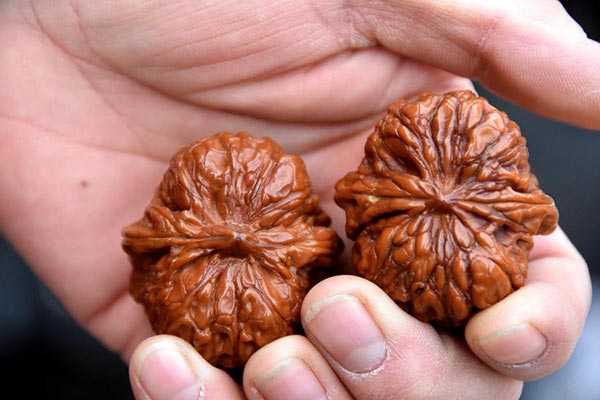
Brought back by Zhang, the walnut is also known as the longevity fruit. It can warm and invigorate the body, and often serves as a key ingredient in Chinese pastries.
核桃由张骞带入中国,也叫长寿果,能够活血益气,是中式糕点的重要原料。
4. Garlic 蒜
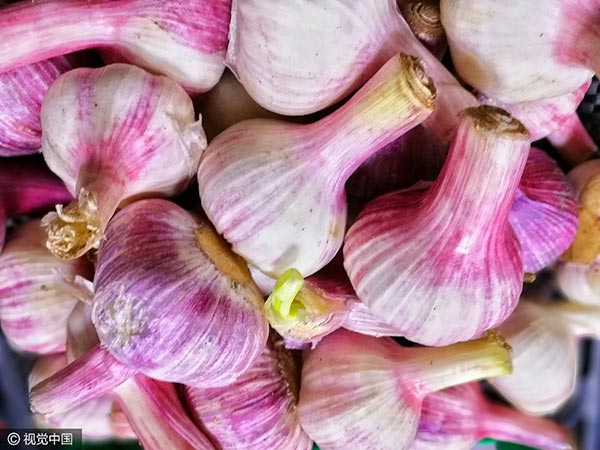
Garlic is native to the region of southern Europe and central Asia. During the Western Han Dynasty (206 BC-AD 24), Zhang introduced the species in the onion genus, Allium, to China. During ancient times in China, foreign tribes were referred to as "Hu troops", so garlic was originally referred to as "Hu garlic".
蒜原产于南欧和中亚,属洋葱科葱属植物,在西汉时期,由张骞带入中国。在古代中国,外国族群都被称为“胡人”,所以,蒜最开始也被称为“胡蒜”。
5. Coriander 香菜
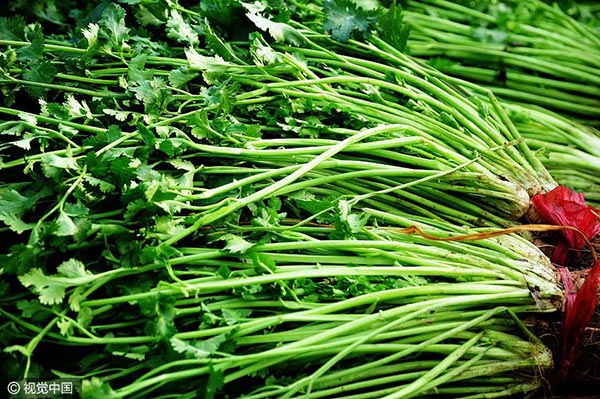
Coriander(读音[ˌkɒriˈændə(r)]), known as cilantro(读音[sɪˈlæntroʊ]) or Chinese parsley, is native to the regions spanning from southern Europe to central Asia. Zhang brought the seeds of coriander into China, according to The Compendium of Materia Medica, an ancient Chinese book on herbology, which was written during the Ming Dynasty (1368-1644) by Doctor Li Shizhen.
香菜,也叫芫荽或中式西芹,原产于南欧到中亚的大片地区。据明代(1368-1644年)医师李时珍所著《本草纲目》记载,是张骞将香菜种子带入了中国。
6. Cucumber 黄瓜
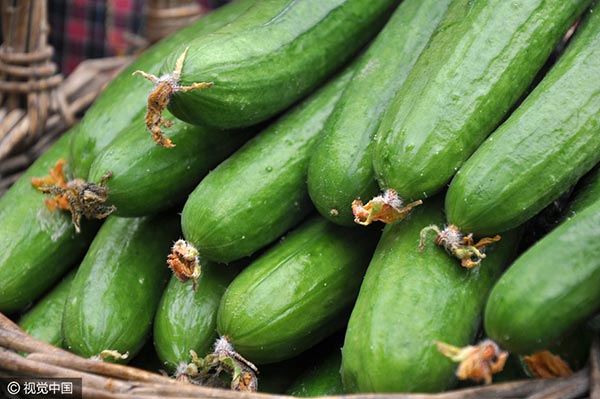
Cucumber is originally from South Asia, on the southern foot of the Qomolangma Mountain. However, in Zhang's time, the cucumber was known as the "Hu melon".
黄瓜原产于南亚,珠穆朗玛峰南面的山脚地带。在张骞所在的时代,黄瓜被称为“胡瓜”。
7. Alfalfa 苜蓿
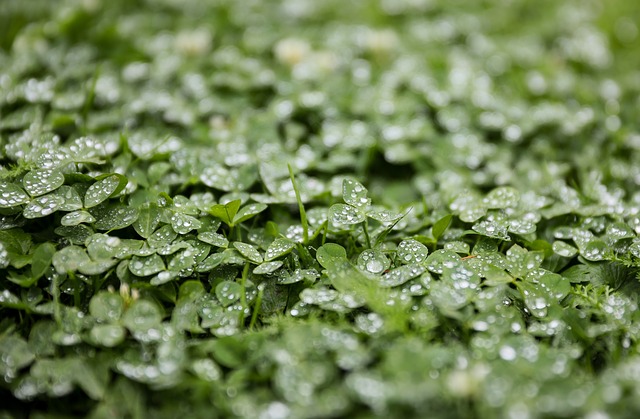
Photo from pixabay.com
The alfalfa(读音[æl'fælfə]), also called lucerne(读音[luˈsɚn]), is an important forage crop in many countries around the world. According to the Records of the Grand Historian, by historian Sima Qian of the Han Dynasty, alfalfa was introduced into China from Dayuan following Zhang Qian's embassy.
苜蓿,也叫紫花苜蓿,是世界上很多国家重要的饲料作物。据汉代史学家司马迁所著《史记》记载,苜蓿是在张骞出使之后,从大宛引进到中国的。
8. Eggplant 茄子

Photo from pixabay.com
Eggplant, originally domesticated in India and Southeast Asia, was brought into China during the Han Dynasty, and became a common vegetable in the Jin Dynasty (AD 265-420).
茄子原产于印度和东南亚,在汉代引入中国,在晋代(公元265-420年)成为常见蔬菜品种。
9. Sesame 芝麻
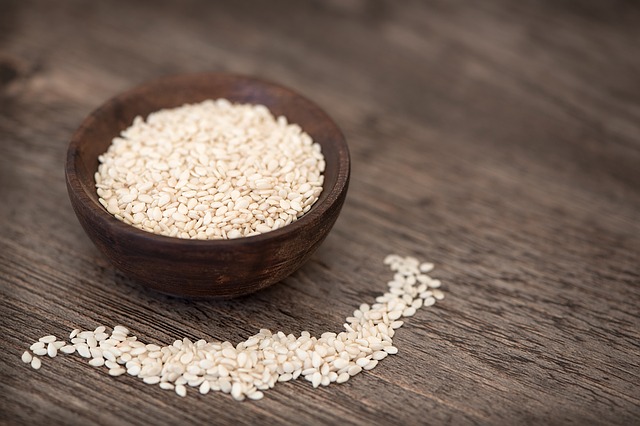
Photo from pixabay.com
Sesame, introduced into China by Zhang, has many species, with most being wild and native to sub-Saharan Africa. Sesame indicum, the cultivated type which is edible, was originated in India.
芝麻由张骞带入中国,品种繁多,多为野生,原产于非洲撒哈拉沙漠以南地区。人工培育的可食用芝麻品种原产于印度。
10. Hyacinth bean 扁豆
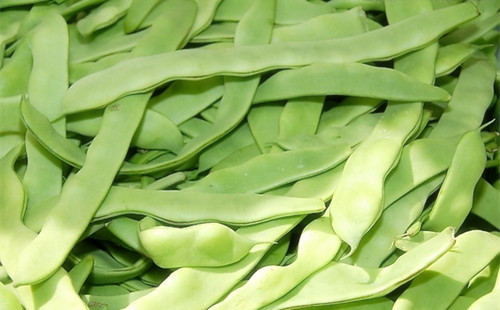
The hyacinth(读音[ˈhaɪəsɪnθ]) bean was originally grown in India, and brought into China between the Han and Jin dynasties.
扁豆原产于印度,在汉代和晋代时期引入中国。
11. Date palm 椰枣
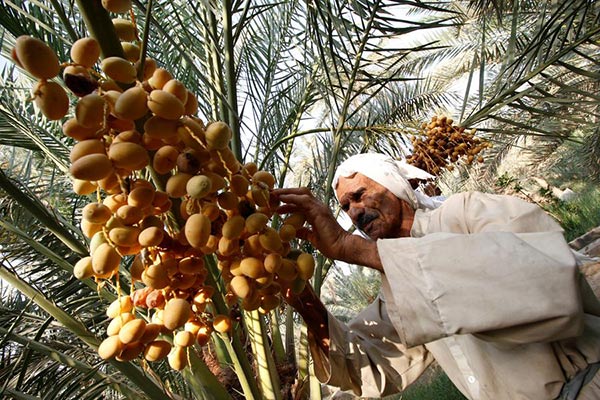
A farmer collects dates from a palm tree at a date palm orchard during harvest in Abul Khassib, a town near the southern Iraqi city of Basra, September 5, 2016. [Photo/Agencies]
The date palm was cultivated for its edible sweet fruit.
人们种植枣椰树,因其果实香甜可食用。
12. Jackfruit 菠萝蜜
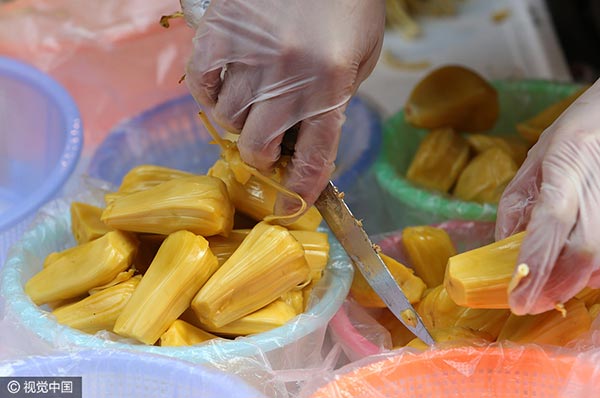
The jackfruit is native to parts of South and Southeast Asia, and is believed to have originated in the southwestern rain forests of the Western Ghats in the Indian subcontinent.
菠萝蜜原产于南亚和东南亚的部分地区。据认为发源于印度次大陆西高止山脉的西南部热带雨林。
13. Black pepper 黑胡椒
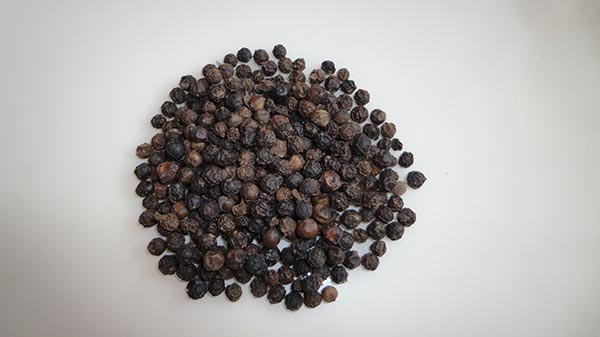
Black pepper is native to ancient Persia, the Arab world, and South India. Throughout the Tang Dynasty (AD 618-907), black pepper was introduced into China by merchants on the Silk Road, and became a popular spice for meat dishes among Tang people.
黑胡椒原产于古波斯、阿拉伯国家和印度南部。到了唐代(公元618-907年),黑胡椒经由丝绸之路的商人引进中国,成为很受唐朝人欢迎的肉食调味料。
14. Pistachio 开心果
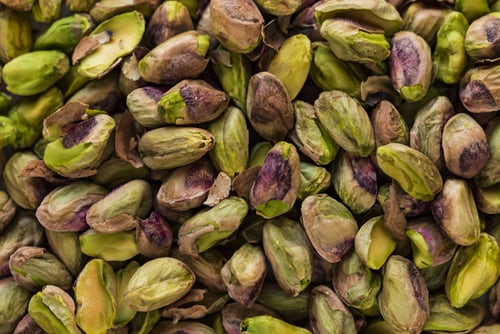
Photo from unsplash.com
The pistachio(读音[pɪˈstæʃiəʊ]), a member of the cashew family, was brought into China by the Arabs during the Tang Dynasty.
开心果是腰果家族的一员,在唐代经由阿拉伯人引进中国。
15. Spinach 菠菜

Spinach is thought to have originated in ancient Persia. The earliest available record of the spinach plant was recorded in Chinese, stating it was introduced into China via Nepal.
菠菜据认为发源于古波斯。现存的有关菠菜的最早史料是用汉字记载的,史料称菠菜是经由尼泊尔引进中国的。
16. Carrot 胡萝卜
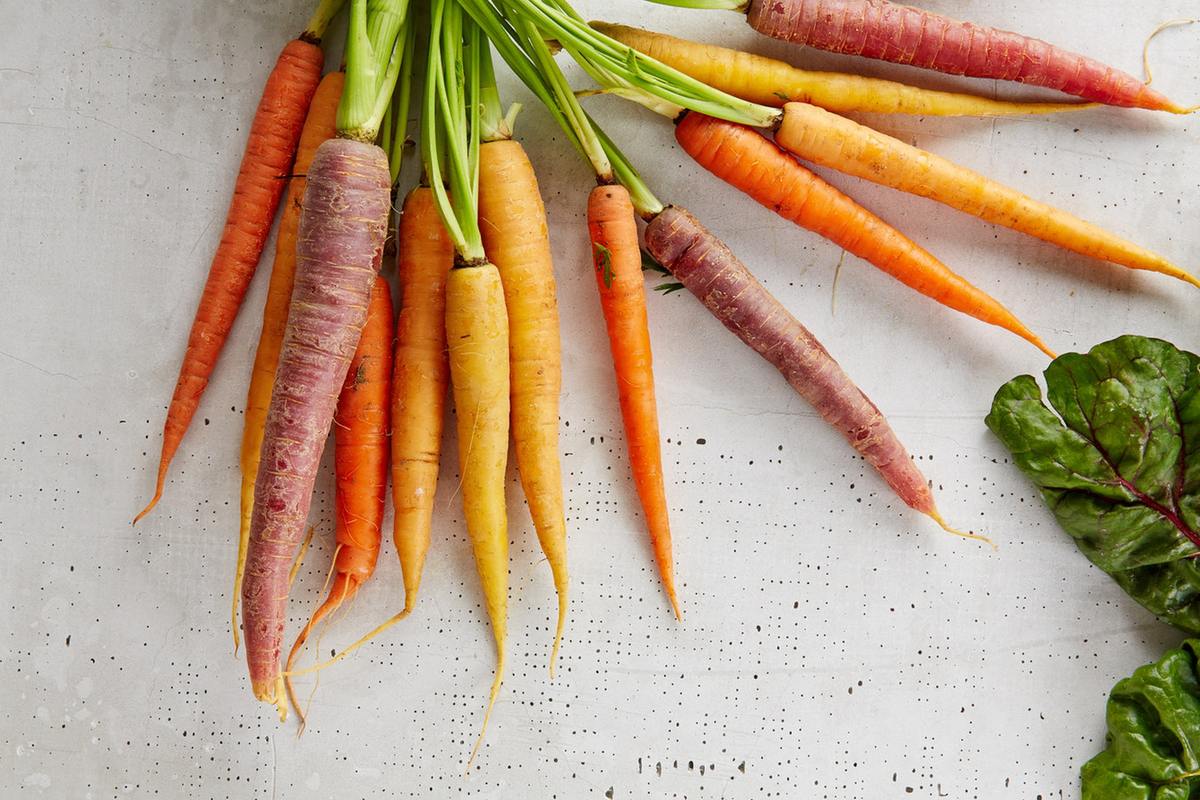
Photo from unsplash.com
Carrots were originally cultivated for its leaves and seeds. The plant was first introduced into the western parts of China, and then Dunhuang of West China's Gansu province. It was then introduced into the central plains during the Yuan Dynasty (1271-1368).
人们原先种植胡萝卜是为了获取它的叶子和种子。胡萝卜最早引入中国西部地区,然后传到甘肃省的敦煌地区。后来在元代(1271-1368年)又引入中原地区。
17. Watermelon 西瓜
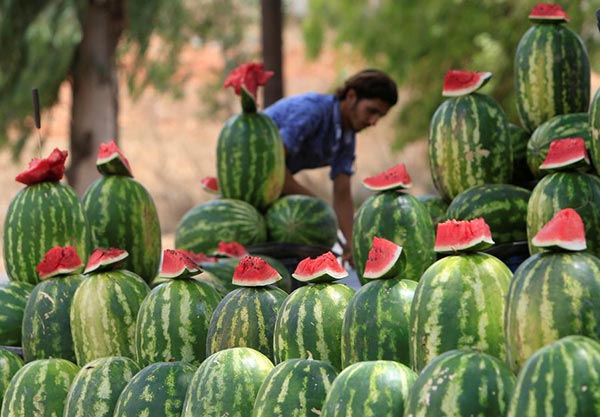
A vendor stands behind watermelons displayed for sale in Kfar Tebnit village, southern Lebanon, August 18, 2016. [Photo/Agencies]
Watermelon, which originated in the desert of Africa, was brought along the Silk Road to western China and Ouigour – located in today's Xinjiang Uygur autonomous region – in ancient China. It appeared in Xinjiang during the early Tang Dynasty, and in China's inland between the Five Dynasties, Ten Kingdomgs (AD 907-960) and Liao Dynasty (916-1125).
西瓜发源于非洲沙漠地区,经由丝绸之路传到中国西部和古中国的回纥(现新疆维吾尔自治区)。唐朝初期西瓜在新疆出现,五代十国(公元907-960年)和辽代(916-1125年)期间传入中国内陆地区。
18. Lettuce 莴苣
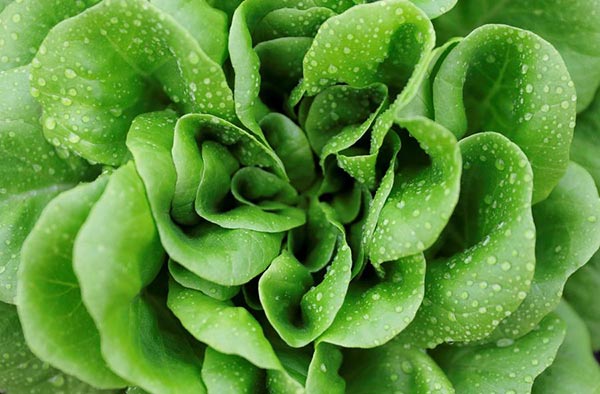
A lettuce is pictured at Kajodlingen farm in Gothenburg, Sweden, September 28, 2016. [Photo/Agencies]
Lettuce originated from the Mediterranean coast, and appeared in China around the Sui (AD 581-618) and Tang dynasties.
莴苣发源于地中海沿岸,隋朝(公元581-618年)和唐朝期间开始在中国出现。
19. Luffa 丝瓜

Photo from pixabay.com
The luffa(读音['lʌfə]), which originated in India, was introduced into China during the late Tang Dynasty and became a common vegetable in the Ming Dynasty.
丝瓜发源于印度,唐朝晚期引入中国,明朝时期成为一种常见的蔬菜。
20. Cabbage 卷心菜
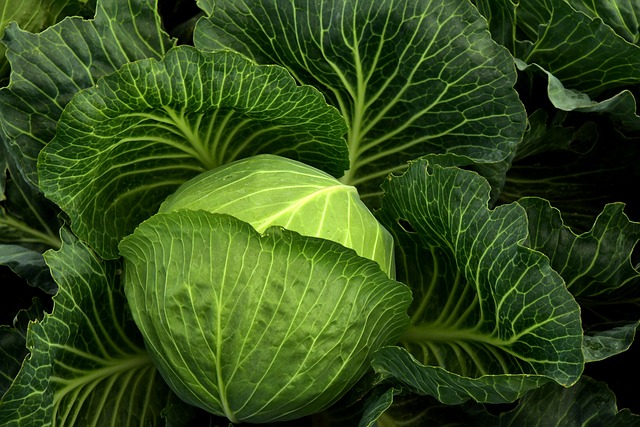
Photo from pixabay.com
Cabbage, a leafy green or purple biennial plant, was domesticated in Europe before 1000 BC. It travelled through the western China before arriving in China by the Hexi Corridor, a part of the Silk Road in Gansu province.
卷心菜是绿色或紫色的二年生叶菜,公元前1000多年开始在欧洲种植。经由河西走廊(丝绸之路甘肃段)穿越中国西部,最后传入中国。
英文来源:中国日报网
翻译&编辑:马文英 陈丹妮